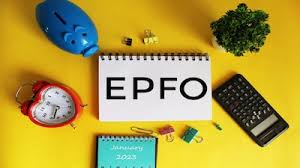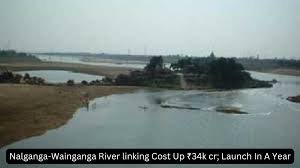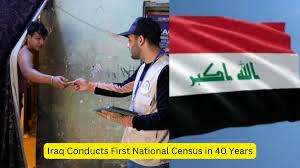Nalganga-Wainganga River Linking Project Cost Increased to ₹34K Crore
Introduction to the Nalganga-Wainganga River Linking Project
The Nalganga-Wainganga River Linking Project, a major initiative aimed at enhancing water management in the region, has recently faced a significant increase in estimated costs. Initially projected to be a relatively modest expenditure, the cost of this ambitious project has now surged to approximately ₹34,000 crore. This increase highlights both the scale of the project and the complexity involved in executing such large-scale water management infrastructure.
Objectives of the River Linking Project
The primary objective of the Nalganga-Wainganga River Linking Project is to improve water availability and distribution across the region. By connecting the Nalganga and Wainganga rivers, the project aims to address the water scarcity issues affecting several districts. This initiative is designed to enhance agricultural productivity, provide a reliable water supply for domestic use, and support industrial growth by ensuring a steady flow of water throughout the year.
Impact on Local Communities
The significant rise in project costs reflects the challenges faced in implementing large-scale water infrastructure projects. While the increased expenditure may raise concerns, the long-term benefits for local communities are substantial. Improved water management will help mitigate the effects of droughts and floods, leading to better crop yields and enhanced living conditions for residents. Additionally, the project is expected to create job opportunities and stimulate economic development in the region.
Government’s Response and Future Prospects
The government has acknowledged the cost increase and is committed to ensuring the project’s successful completion. Efforts are being made to streamline operations and manage resources effectively to stay within the revised budget. The project is scheduled to be launched within the next year, with ongoing assessments to address any emerging challenges. The successful execution of the Nalganga-Wainganga River Linking Project is anticipated to serve as a model for future water management initiatives across India.

Why This News Is Important
Strategic Water Management
The Nalganga-Wainganga River Linking Project’s significance lies in its strategic approach to water management. As India grapples with increasing water scarcity and uneven distribution, such river linking projects are crucial for ensuring sustainable water availability. By linking two major rivers, the project aims to create a more balanced water supply, addressing regional disparities and supporting agricultural and industrial needs.
Economic and Environmental Impact
The substantial increase in the project’s cost underscores the economic and environmental considerations involved. Effective water management can have far-reaching effects on local economies by enhancing agricultural productivity and supporting industrial activities. Additionally, improved water distribution helps in mitigating the environmental impacts of droughts and floods, contributing to overall ecological balance.
Government’s Commitment to Infrastructure Development
The government’s response to the cost increase demonstrates a commitment to infrastructure development and long-term planning. Despite the financial challenges, the continued investment in such projects highlights the importance of building resilient infrastructure to support future growth and development.
Historical Context
Background of River Linking Initiatives
River linking in India has been a topic of interest since the early 20th century. The concept gained prominence with the idea of interlinking major rivers to address water scarcity and promote equitable distribution. The Nalganga-Wainganga River Linking Project is part of a broader national initiative to create a network of linked rivers, aimed at enhancing water security and supporting regional development.
Previous Projects and Their Outcomes
Several river linking projects have been undertaken in India, with varying degrees of success. These projects have often faced challenges related to cost overruns, environmental concerns, and logistical issues. However, they have also demonstrated the potential benefits of improved water management, including increased agricultural yields and enhanced regional development.
Key Takeaways from the Nalganga-Wainganga River Linking Project
| Serial Number | Key Takeaway |
|---|---|
| 1 | The cost of the Nalganga-Wainganga River Linking Project has increased to ₹34,000 crore. |
| 2 | The project’s goal is to improve water availability and distribution in the region. |
| 3 | Increased costs reflect the complexities of implementing large-scale water infrastructure projects. |
| 4 | The project is expected to enhance agricultural productivity, support industrial growth, and create job opportunities. |
| 5 | The government remains committed to completing the project within the revised budget and timeline. |
Important FAQs for Students from this News
1. What is the Nalganga-Wainganga River Linking Project?
The Nalganga-Wainganga River Linking Project is an initiative aimed at connecting the Nalganga and Wainganga rivers to enhance water management in the region. Its goals include improving water availability, supporting agricultural productivity, and ensuring a steady water supply for industrial and domestic use.
2. Why has the cost of the project increased to ₹34,000 crore?
The cost increase reflects the complexities and challenges involved in executing large-scale water management infrastructure projects. Factors such as inflation, unforeseen technical challenges, and the scale of the project contribute to the revised budget.
3. What are the primary benefits of the Nalganga-Wainganga River Linking Project?
The project is expected to mitigate water scarcity issues, enhance agricultural productivity, support industrial growth, and improve living conditions for local communities. Additionally, it aims to create job opportunities and stimulate regional economic development.
4. When is the Nalganga-Wainganga River Linking Project scheduled to be launched?
The project is scheduled to be launched within the next year, with ongoing efforts to manage resources and address any challenges that arise during the implementation phase.
5. How does the Nalganga-Wainganga River Linking Project fit into India’s broader water management strategy?
The project is part of India’s national river linking initiative, aimed at creating a network of connected rivers to address water scarcity, promote equitable distribution, and support regional development. It serves as a model for future water management projects across the country.
Some Important Current Affairs Links
















